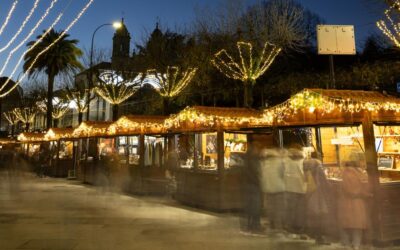The
Pedagogical Museum of Galicia (MUPEGA)
depends on the Department of Culture, Education, Vocational Training and Universities and was created with the aim of recovering, protecting, exhibiting and disseminating the educational heritage of Galicia.
Its creation represents the materialization of a historical project that dates back to 1926 with a very specific vision: the promotion of a Galician museum center, specialized in education, to show the trajectory of this discipline throughout the different stages experienced by the territory.
Thus, the Xunta de Galicia took up the initial idea and launched a new plan to move forward with this exhibition and ethnographic center. Thus, in 2000, the project of the Pedagogical Museum of Galicia (MUPEGA) began, which was inaugurated in October 2004 by the then president of the Xunta de Galicia, Manuel Fraga Iribarne.
Structured over three floors, the visit to the building offers a retrospective that shows the evolution of the Galician school over time. You can see recreations of classrooms from the nineteenth century, curious school objects or toys used by boys and girls of each era.
The center’s permanent exhibition is distributed over 1,200 square meters of the 3,500 square meters of the building.
The first floor has an auxiliary library and bibliographic, newspaper and periodicals reference services, as well as a sound and video library, a room for research personnel and an auditorium with a capacity for 112 people, which usually hosts institutional events related to the subject.
The second floor includes five sections dedicated to games and toys, educational administration, schools beyond the sea, the educational system and an area for temporary exhibitions.
Finally, the second floor offers spaces dedicated to the different classrooms over time, with examples dating back to the Bourbon Restoration, the Second Republic or Francoism; another dedicated to Special Education; to the Mupega Network; and to secondary and professional education.






